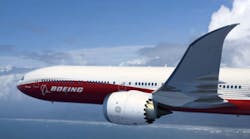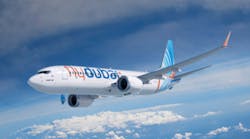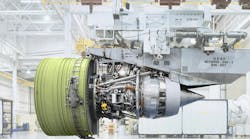The Boeing Co. delivered its annual Environment Report, the seventh annual compilation of the jet builder’s commitments and accomplishments in efforts to improve the environmental performance of its products and operations. Boeing noted the report includes details of its progress in “sustainable growth and environmental conservation” in the communities where its employees live and work worldwide.
The jet builder has been issuing summary reports on its annual environmental commitments and performance 2007.
"Every day, Boeing employees find new and innovative ways to serve our global customers, and they are also committed to responsible environmental leadership in our products and how we manufacture, deliver and support them," stated chairman and CEO Jim McNerney
The new report details the progress Boeing has made toward its environmental targets.
Having set and achieved several targets for “absolute reduction” over five years, Boeing now has set 2017 targets for greenhouse gas emissions, water consumption, solid waste to landfill and hazardous waste generation.
Among the details of the 2014 report, Boeing celebrated the positive environmental effects of brining “cleaner” jets into service, namely the 777X and 787-10 aircraft. Both are wide-body twin-engine commercial aircraft designed to incorporate more modern fuel-efficient and lower-emission engines.
Boeing also noted the environmental accomplishment of having built the world's first all-electric propulsion satellite
The report also explains how Boeing’s “future flight concepts” will improve its environmental performance, including liquid hydrogen-powered Phantom Eye, which was assigned experimental aircraft status from the U.S. Air Force
Boeing pointed to “innovations” it has developed that help to achieve zero increases in greenhouse gas emissions, such as using solar tubes to paint aircraft.
It also boasted of its efforts to develop and commercialize “sustainable” aviation biofuel, including "green” diesel fuel.
Finally, the report summarizes Boeing’s progress toward new operational footprint goals. "As we look forward to our second century and building a bigger and better Boeing across the breadth and depth of our businesses and communities, we are also focused on helping build a better planet," McNerney said.









